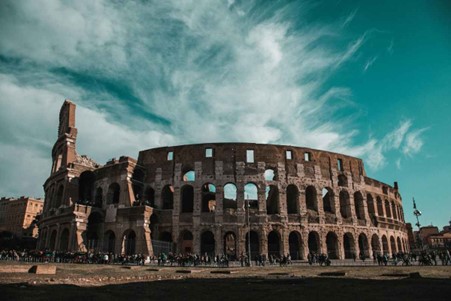Italy is a country where real life often looks like a movie. Narrow streets framed by Renaissance architecture, sunlit coastlines, dramatic mountain passes, and town squares that seem untouched by time — it’s no wonder that international filmmakers keep returning to Italian cities for their most iconic scenes.
While Rome and Venice are among the world’s most filmed locations, many other Italian destinations have served as open-air sets for some of cinema’s most memorable moments. These are cities where art imitates life, and life walks straight through a film reel.
If you’re the kind of traveler who likes to connect stories on screen with real places, here are some of the Italian cities that international directors — from Hollywood to arthouse — have fallen for.
Rome
Let’s start with the obvious. Rome has been immortalized in film since the birth of cinema. From Roman Holiday to La Dolce Vita to The Talented Mr. Ripley, its cinematic legacy is not just rich — it’s endless.
But it’s not just about the classics. Rome’s layered beauty has appeared in contemporary films like Eat Pray Love, To Rome with Love, and Spectre, where its ancient ruins and baroque architecture continue to provide dramatic contrasts and romantic tension.
Walking through the city often feels like stepping into a scene that’s already been lit and framed. And when the sun begins to set on the Colosseum or the Spanish Steps, it becomes clear why the cameras keep rolling.
Florence
Florence’s role in cinema is quieter but no less impactful. Its skyline — crowned by the Duomo — is unmistakable, and its Renaissance heart has inspired scenes of passion, betrayal, and artistic transformation in everything from A Room with a View to Inferno, the film adaptation of Dan Brown’s novel.
Yet Florence isn’t only about postcard views. Its smaller alleys, bridges, and palazzos have provided the kind of intimacy directors seek when the emotion needs to match the setting.
For travelers eager to follow the path of iconic scenes or discover where fiction and Florentine history blur, Florence cinema itineraries offer a curated way to connect the dots between film and place.
Naples
Naples has long been a favorite for directors drawn to authenticity. Whether through the lens of neorealist films like L’oro di Napoli or the more recent HBO phenomenon My Brilliant Friend, the city provides a backdrop that is both beautiful and unvarnished.
Its bustling markets, sea-worn facades, and hillside views offer a kind of cinematic truth that’s hard to fake elsewhere. It’s not about perfection — it’s about emotion. And Naples delivers that in abundance, often without needing a script.
Matera
With its stone-carved homes and labyrinthine alleys, Matera feels like a place outside of time. Unsurprisingly, it’s become the go-to stand-in for ancient cities — from Jerusalem in The Passion of the Christ to the backdrop of No Time to Die, where James Bond races through narrow paths on a motorcycle.
Its dramatic cliffs and silent caves make it uniquely cinematic. But it’s more than just set dressing — Matera’s visual impact is unforgettable, both on screen and in person.
Venice
No list would be complete without Venice. Its dreamlike scenery, reflected endlessly in the canals, has attracted directors from every genre. Whether it’s intrigue in The Tourist, art-world suspense in Don’t Look Now, or romance in Summertime, Venice is more than a setting — it’s a character.
Filming here is a challenge, but the result is always worth it. And for visitors, recognizing familiar corners from the screen adds an extra layer to every bridge crossed and every shadowed calle wandered.
Italian cities don’t just host films — they shape them. They offer directors not only atmosphere and history but emotion and unpredictability. Italy proves time and again that some of the world’s best stories were filmed — and continue to unfold — right here.




